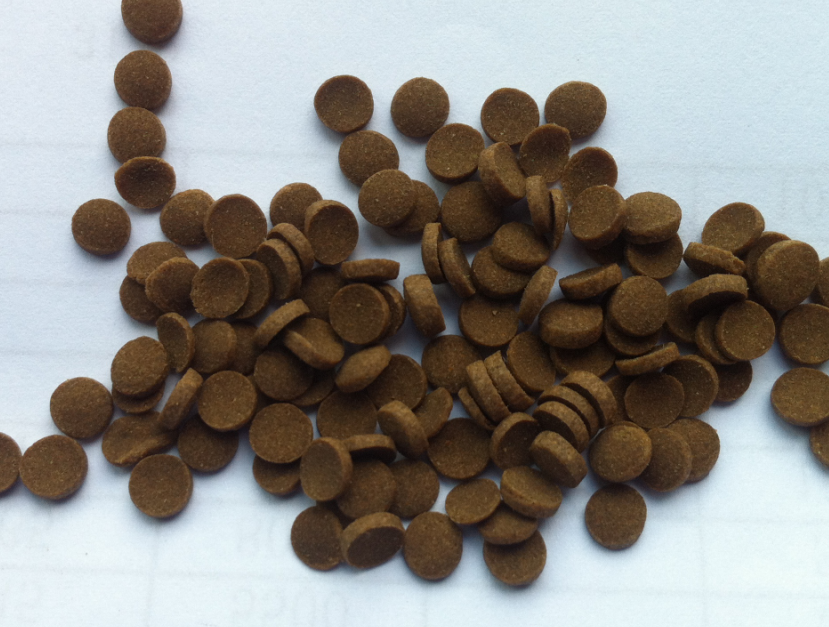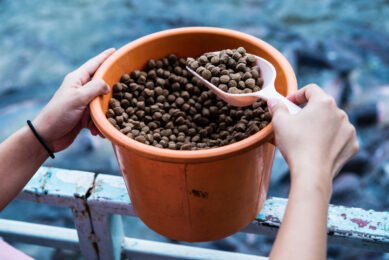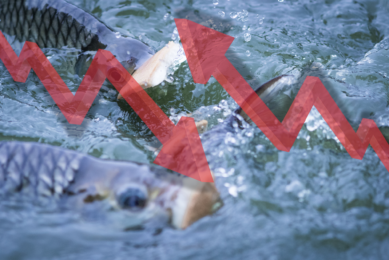Growing trend of Asian extruded aquatic feeds

In parallel to intensive aquaculture development in the recent years, extruded aquatic feeds have grown throughout China and Southeast Asia. The strong characteristics of the extruded feed are higher animal digestibility and stability in water and thus offer better feed availability, reduced water pollution, and important economic benefits.
By Ma Liang, Mi Changyu, Zhang Guiyang and Tang Bing, Muyang Group, China
Asian aquatic feed production is rapidly increasing following the strong growth of consumer demand for fish. In 2012, Asia accounted for 56% of global aquatic feed output. Chinese production was 18.55 million tonnes, adding more than 20% year on year.
The scale of the expansion of extruders in the last few years is also remarkable, and expected to continue in the years ahead. Today there are over 300 aquatic feed extruding lines in China with capacity greater than 5 t/h, of which 200 are in the southern provinces. In Southeast Asia, the production capacity used to range between 5-8 t/h, but a higher capacity of 10-15 t/h is growing common in the last two years, and feed manufacturers are investing in three lines or the high capacity production lines. In China, a typical feed producer used to have a capacity of 3-5 t/h, but this is now upgraded to 10 t/h. The investments are strongly backed by a solid surge in demand of the extruded feed.
As a background to the trend, in Guangdong province where aquaculture is largely operated, most farmers lease the pond, but a significant lease price rise of 30-50% was witnessed between 2009 and 2011. To maintain the farm profitability, they had to increase the farming density. The fish output per mu of pond is now reaching 6,000 kg/year. On the one hand, the farming of fish with high density depends on the improved farming techniques, but the more important factor is to choose the extruded feed with minimal pollution to the water body rather than the hard pellets.
Currently the extruded feed only accounts for 14.6% of the total common freshwater fish feed volume, as the pelleter is mainly used to process hard pellets. Over the past two years, however, extruded feed increased its share, and it is expected to account for 80-90% of total aquatic feed tonnage in the future. Coupled with the expansion of total feed demand, there is a great opportunity for the extruded feed markets.
Development of extruded feed
In early days, the extruded feed for freshwater fish and common sea water fish were characterised by low fat and low protein content, and they were typically floating types. For example in China, extruded feeds were fed to common freshwater fish such as snail carp, grass carp, silver carp and bighead carp. More recently, extruded floating fish feed became popular, but the proportion of special extruded aquatic feeds increased gradually due to those benefits as described.
Shrimp feed
In Thailand and Vietnam extruded shrimp feeds are already commonly used, with CP, Inteqc and Betagro leading the industry.
Compared with the shrimp pellet, the microorganism controlled in the extruded shrimp feed can improve the quality of feed, reduce water pollution, increase the farming density and improve feed digestion and utilisation.
On the contrary, a main drawback is the relatively high production costs and large loss of heat during production, although it can be resolved by process technology. Feed producers are actively facilitating discussion platforms for feed technology, nutritional characteristics, breeding effects, processing equipment and techniques of extruded shrimp feed.
Crab feed
Crab feeds are shifting gradually from pellets to extruded feeds, driven by demand for high quality crabs bred in a clean water environment. In China, there is large-scale crab breeding in the Yangtze River.
The prerequisite for high-quality crabs is freshwater. The water transparency should be 20-40 cm and the suspended solid content should not exceed 10 mg/l. Although there are some rivers and lakes with good water quality where branded crabs are bred, many areas cannot meet the standard of Yangcheng Lake or Hongze Lake. In order to get high quality crabs, extruded feed is a good option, minimising water pollution while intensifying the production density.
High-grade fish feed
Aquaculture of fish species other than common fish is increasing. The expansion is supported by good profitability of high-grade extruded feed, for which feed producers are investing in R&D.
High-grade fish feed has strict requirements for the formula, raw materials, uniformity of physical property, processing technique, equipment and production control. They are usually high in fat and protein content.
The floating rate of feed is important not only because it should be found by fish, but also due to the softening time, because some fish stop eating when they swallow an un-softened pellet, which can result in a lower consumption. The sinking speed of the slowly-sinking feed is ideally 4-6 m/min. There is a great demand for the high quality slowly-sinking fish feed, or pellets sinking in a ‘Z’ form, spinning in water to be efficiently ingested.
Common floating aquatic feed extruder
Today the floating feed is mainly fed to common fish, and to high-grade fish to some extent, and the scale of feed production keeps expanding to more extruders per producer. A common floating feed extruder is not designed to meet different requirements of protein and fat density as it basically handles a low-protein and low-fat formula. However, the technological quest to increase the capacity and save energy is ongoing, with research of conditioner, extrusion screw and discharging die as well as the targeted design. A Muyang MY215 ordinary single-screw extruder with a main motor of 250kW can produce both common low-grade and high-grade fish feed. Its production capacity of tilapia feed is generally 8-10 t/h. After a development, the output of a Muyang MY215 special single-screw extruder with a same power designed for low fat and low protein can reach a maximum production capacity of 13 t/h.
Twin-screw extruder
While single-screw extruders are suitable for the production of both common fish feed and high-grade fish feed, twin-screw extruders are mainly used to produce high-grade feed with better adaptability to feed varieties and higher capacity. Muyang has developed the MY120×2 twin-screw extruder for the high-grade aquatic feed market, which is widely used at present.
New technologies have been applied in high-grade aquatic feed extrusion equipment, such as a twin-screw extruder equipped with a combined conditioner and a unique large-volume screw using steam for heating instead of partial mechanical energy, which can increase the capacity stably at 8 t/h or higher.
Studies on the extruder configuration and process parameters can bring solutions for the better quality products and production capacity of the extruded feed. After three years of R&D efforts, Muyang developed a set of hardware configuration and process parameters on a twin-screw extruder, such as fast-sinking feed for sturgeon, shrimp, crab and other species, and slowly-sinking feed for siganus guttatus, turbot, rockfishes, rainbow trout, large yellow croaker and some sea water fish.
Features
The twin-screw extruder can produce pellets in a uniform shape, while enabling frequent changes of the bulk density, different fat and protein contents in formula and size based on various requirements. It also allows higher protein content by reducing the starch content, while some extruders require a starch content no less than 18-20% to achieve a higher protein content and use more expensive protein with higher purity.
Improving the production efficiency with control devices
Currently an extruder, especially a twin-screw variant, can meet the requirements for production of sinking or slowly-sinking aquatic feed. In order to increase the production capacity or the bulk density, water circulation control device and vacuum density control devices have been introduced by several manufacturers. The water circulation vacuum pumping density control device can take away the energy of the ripened materials by the screw extrusion based on the vacuum negative pressure, and the materials of the reduced energy can be shaped by the screw extrusion. In comparison, if not using such a device, the expansion of the materials is limited after shaping due to the reduced energy, so as to obtain a high bulk density.
For example, to produce a crab feed with a bulk density of 580 g/h using MY120×2 and associated device, the bulk density of the finished product reaches 630 g/h. By increasing the extrusion chamber pressure until the bulk density is returned to 580 g/h, the extruder can achieve about 16% higher production capacity.
Today extruded feeds account for about 80% of demand in developed markets such as Europe and America, while Asia still sees room for a higher share. Insiders believe that extruded feeds are inevitable for the future of the industry, driven by continuous innovation, technology advances and optimal nutrition formula, lower waste, less pollution, high conversion rate and high efficiency.
References are available on request.











